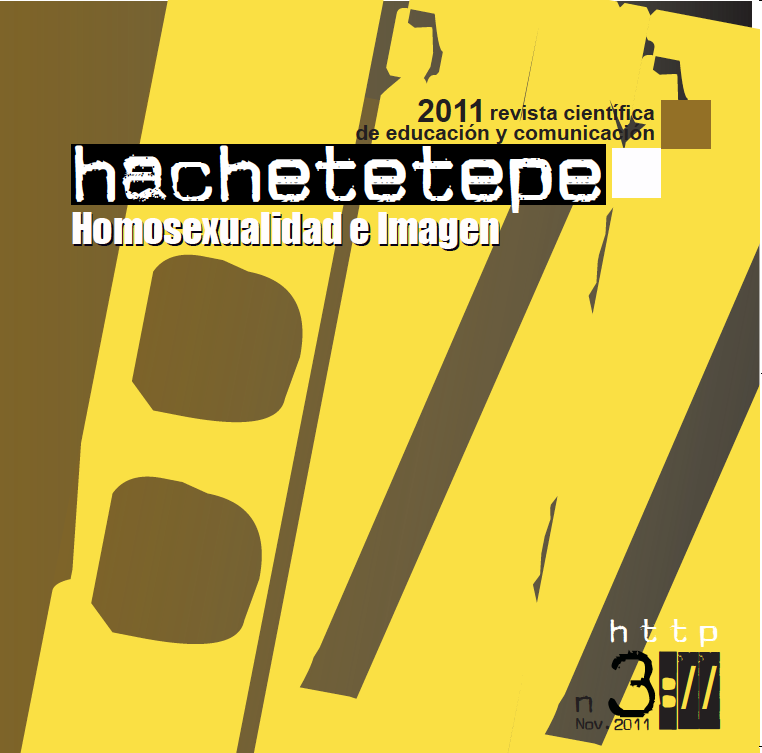“BAFÃO/CONFUSION” From the Gay Kit: Discourse Analysis of the LGBT militancy (Lesbians, Gays, Bisexuals and Transvestites, and Transgender)

Info
Abstract
Taking into account that the patriarchal discourse as a producer of discursive violence falls above all upon women, this work shall use the discipline of discourse analysis to gauge the sensibility that emerges from the discursive practices of the LGBT militants in the context of “Bafão do kit gay”. This expresses the political positioning in relation to the veto of the president Dilma Rousseff, and the initiative of The “Project Schools without Homophobia”. The corpus analyzed is based upon a series of emails produced and circulated by gay militants within this context, and they allude to the gender and sexuality of the aforementioned president. The interdiscourse produced by feminist theorists that present compulsive patriarchy and heterosexuality as a key analysis against women. The result looks at the crises generated by the referred veto which makes visible by gay misogyny and solidarity between women.
Keywords
Downloads
How to Cite
License

This work is licensed under a Creative Commons Attribution-NonCommercial-NoDerivatives 4.0 International License.
Those authors who have published with this journal, accept the following terms:
- They will retain their copyright and guarantee the journal the right to first publication of their work, which will simultaneously be subject to the Creative Commons Attribution License . They may be copied, used, disseminated, transmitted and publicly displayed, provided that the authorship, url, and magazine are cited, and are not used for commercial purposes. No derivative works are allowed.
- They may adopt other non-exclusive license agreements for the distribution of the published version of the work (e.g., deposit it in an institutional telematic archive or publish it in a monographic volume) provided that the initial publication in this journal is indicated.
- Disseminate your work through the Internet (e.g., in institutional telematic archives or on your website) once the manuscript is accepted, which may lead to interesting exchanges and increased citations of the published work. (See The effect of open access).
Hachetetepé. Scientific journal of education and communication does not charge a fee for the submission of manuscripts or for the publication of its articles.
References
Butler, J. (2003). Problemas de gênero. Rio de Janeiro: Civilização Brasileira.
Dépêche, M-F. (2008). “Reações hiperbólicas da violência da linguagem patriarcal e o corpo feminino”. En Stevens, C.M.T.; Swain. T. N. A. Construção dos corpos: perspectiva feminista. Florianópolis: Ed. Mulheres; 207-218.
Foucault, M. A. (2010). Ordem do discurso. São Paulo: Loyola.
Lessa, P. (2003): “O que a história não diz não existiu: a lesbiandade em suas interfaces com o feminismo e a história das mulheres”. En Tempo de Histórias, 7.Disponible en: http://vsites.unb.br/ih/novo_portal/portal_his/revista/
arquivos/edicoes_anteriores/2003/interfacescomofeminismoeahistoriadasmulheres.pdf
(Consultada el: 26/3/2010)
Orlandi, E. P. (1999). Análise do discurso: princípios e procedimentos. Campinas: Pontes.
Pateman, C. (1993). O contrato sexual. Rio de Janeiro: Paz e Terra.
Pinto, C. R. J. (2003). Uma história do feminismo no Brasil. São Paulo: Fundação Perseu Abrano.
Rich, A. (1981). “La contrainte à l'hétérosexualité et l'existence lesbienne”. En Nouvelles Questions Féministes, 1; 15-43.
Saffioti, H. I. B. (2002). “Contribuições feministas para o estudo da violência de gênero”. Em Labrys Estudos Feministas, 1-2; 1-12. Disponible en: http://e-groups.unb.br/ih/his/gefem/labrys1_2/. (Consultada el: 10/4/2010).
Saffioti, H. I. B. (2004). Gênero, patriarcado, violência. São Paulo: Perseu Abramo.
Saffioti, H. I. B. (1997). “Violência doméstica ou a lógica do galinheiro”. En Kupstas, M. (Org.) Violência em debate. São Paulo: Editora Moderna; 39-57.
Scott, J. (1995). “Gênero uma categoria útil de análise histórica”. En Educação e Realidade: Gênero e Educação. 2.
Sedgwick, E. K. (2007). “A epistemologia do armário”. Cadernos Pagu, 28; 19.
Swain, T. N. “Feminismos e lesbianismo”. En Labrys, Estudos Feministas, 1-2.
Disponible en: http://www.unb.br/ih/his/gefem/labrys1 _2/femles.html (Consultada el: 18/7/2009)
Witig, M. (1980). “La pensée straigh”. En Questions feminists, 7; 45-53

